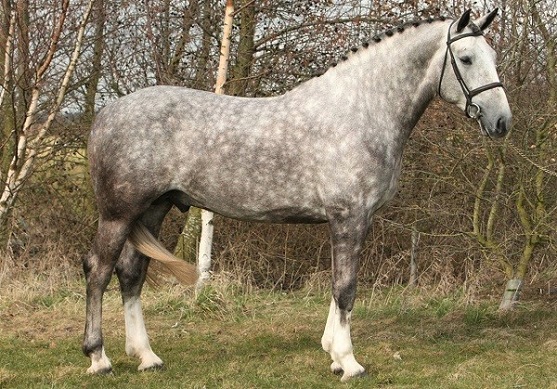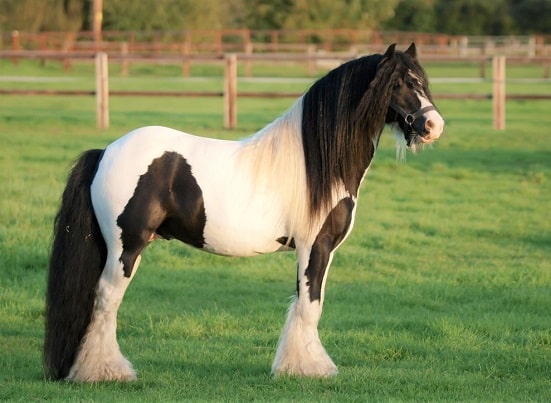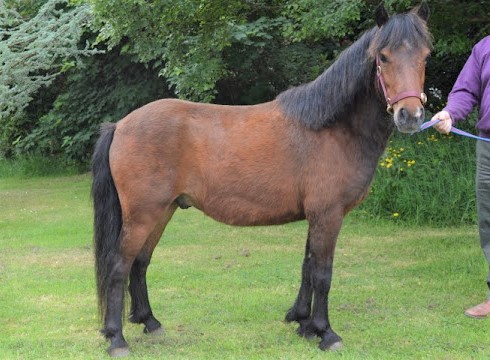Irish horse breeding is one of the most elite in the world. The nation’s horseracing traditions date back thousands of years, with some of the most prestigious Thoroughbred studs found here.
Racehorses from Irish bloodlines such as the famous Sea The Stars, Zarkava, or Yeat have gone on to win several Group 1 races and international championships.
Other than world-class Thoroughbreds, Ireland has also got several native horse and pony breeds. Most of them developed from the now-extinct Irish Hobby, a short but swift light cavalry horse of the Middle ages.
The national horse breed of Ireland is the Irish Draft. Its strong musculature and bone combined with a gentle nature have made this breed a popular choice for producing heavy warmblood crosses.
Quality, hardiness, and good health characterize all Irish horse breeds. They are talented athletes and have competed successfully in dressage, hunter/jumper, and driving classes.
Here are 5 Irish horse and pony breeds that still exist today:
Connemara Pony

Bildagentur Zoonar GmbH / Shutterstock.com
The Connemara is an elegant Irish pony breed originally from Galway in western Ireland. Suitable for children and adults alike, these show quality ponies often appear on riding and driving events across the globe.
Connemara Ponies have a well-proportioned, athletic body that clearly reflects Spanish origins. They range between 12.2 and 14.2 hands in height and can be of any solid color, with gray being the most frequent.
Some believe the ancestors of Connemara Ponies arrived in Ireland on the ships of the Vikings. Others are convinced they descend from the Irish Hobby horse. There’re also origin stories about Andalusians swimming ashore from 16th-century Spanish shipwrecks and mixing with native stock.
Other breeds have also contributed to the modern Connemara Pony, such as the Arabian, Thoroughbred, or Hackney.
As more and more nations recognized the value of this high-quality sports pony, Connemaras have soon spread around the world. Today, they are bred on almost every continent.
The intelligence, hardiness, and versatility of these gorgeous ponies are second to none. They continue to awe audiences on classical English riding and driving classes, but don’t shy away from endurance competitions either.
Irish Sport Horse

Kelley Varisco / Shutterstock.com
The Irish Sport Horse (or ISH) is a breed of exceptional athletic talent. With over 15 Olympic medals under their belt over a course of 25 years, the ISH dominates the discipline of eventing.
Bred for quality and scope, the Irish Sport Horse has sloping shoulders, a strong back, and sturdy bones. They stand between 16 and 17 hands on average and are often bay, black, chestnut, or gray.
The history of the breed dates back to 1923. In order to create the perfect warmblood, Thoroughbreds were crossed to Irish Draft horses.
Later in the 19th-century, the Irish Sport Horse received an infusion of Trakehner, Hanoverian, and Selle Français blood, which maintained diversity in the breed.
Despite their size, they are easy to handle and have a docile, sensible temperament. Irish Sport Horses are a very good horse breed for jumping and eventing. They are a common sports horse breed on the British Isles but are also in high demand worldwide.
Wile ISHs are the stars of intermediate to advanced level eventing, they are competitive in the hunter/jumper and dressage disciplines too. Due to their good work ethic and gentle disposition, they also make fabulous trail riding horses.
Irish Draught

Commonly recognized as the national horse breed of Ireland, the Irish Draught is the pride of the nation. It is also one of the most athletic draft horse breeds out there, with purebred Irish Draughts competing in eventing and hunting classes.
Irish Draught horses should have a deep chest and sloping hindquarters providing an active, free movement. The ideal height for Irish Draught horses is between 15.2 and 16.3 hands and most solid coat colors are present.
Earliest official records of the Irish Draught date back to the 18th century. Several breeds made up the early foundation stock for the modern Irish Draught, such as the Irish Hobby, Anglo-Normal, and Iberian breeds.
At the turn of the 20th century, more breeds were added such as the Clydesdale for extra height, the Thoroughbred for athleticism, and also Connemara ponies.
Intentions for the Irish Draught were to create an all-purpose workhorse that is equally happy to do draft work, pull a carriage, or carry a rider. As with other draft horse breeds, their numbers declined drastically after the World Wars and the mechanization of most industries.
Luckily, demand increased again as the Irish Draught began producing high-quality sports horses in crosses with Thoroughbreds and warmblood breeds. Purebred Irish Draughts also compete in many heavyweight riding classes and are popular as police horses.
Gypsy Vanner

The Gypsy Vanner or Irish Cob is a colored horse breed of Ireland and Great Britain. Traditionally the horse of Romani Travellers, the Gypsy Vanner has soon conquered the hearts of equestrians around the world.
Gypsy horses are commonly piebald or skewbald, but can also be solid-colored. Long, thick feathering on the legs is typical in the breed, alongside abundant manes and tails. The horses should be of a cob type with a height range of around 14 to 15 hands.
Despite having roots in the 19th century, the Gypsy Vanner only became an official breed in 1996. To this day, Gypsy horses are an integral part of Romani culture.
Originally, the Travellers bred them from colored Shire and Clydesdale horses that were unfashionable at the time and often dismissed by English riders.
The Romani needed a strong, reliable horse that would pull their mobile homes or “vardoes” across the British Isles. The horses eventually became a valuable part of Romani families and received the highest quality care
Gypsy horses are famous for their versatility and impeccable manners. There’re countless events and shows dedicated to the breed, mostly held in Europe and the United States.
The largest such event is the traditional Appleby Horse Fair, where thousands of Gypsy Vanners are traded between Romani families and also the general public.
Kerry Bog Pony

This adorable Irish pony breed has been living wild in southwestern Ireland for centuries. Despite the breed nearly going extinct at one point, numbers have now stabilised and are in the hundreds.
Kerry Bog Ponies range between 10 and 12 hands in height, with stallions being somewhat taller than mares. They have a low weight-to-height ratio and a characteristic walk that enables them to travel in the bogs. The ponies can be of any solid color and white markings are common.
While enthusiasts like to believe the Kerry Bog Pony descended from the Irish Hobby horse, genetic studies have shown closer relations with other mountain and moorland ponies. The breed itself likely played a role in the development of the Gypsy Vanner horse.
What’s special about the Kerry Bog Pony is that is adapted perfectly to its boggy environment. Having to walk mainly on soft ground, the ponies developed a special footfall pattern where they swing out their hind legs slightly which propels the body forward. They also have a thick winter coat and can survive eating heather, moss, and possibly even seaweed!
In the past, the ponies were captured from their feral herds to help transport peat and kelp into local villages.
The breed has received much praise for its sure-footedness, strength, and intelligence. Today, Kerry Bog Ponies often pull carriages or assist in therapeutic riding programs.
source: horseyhooves.com








